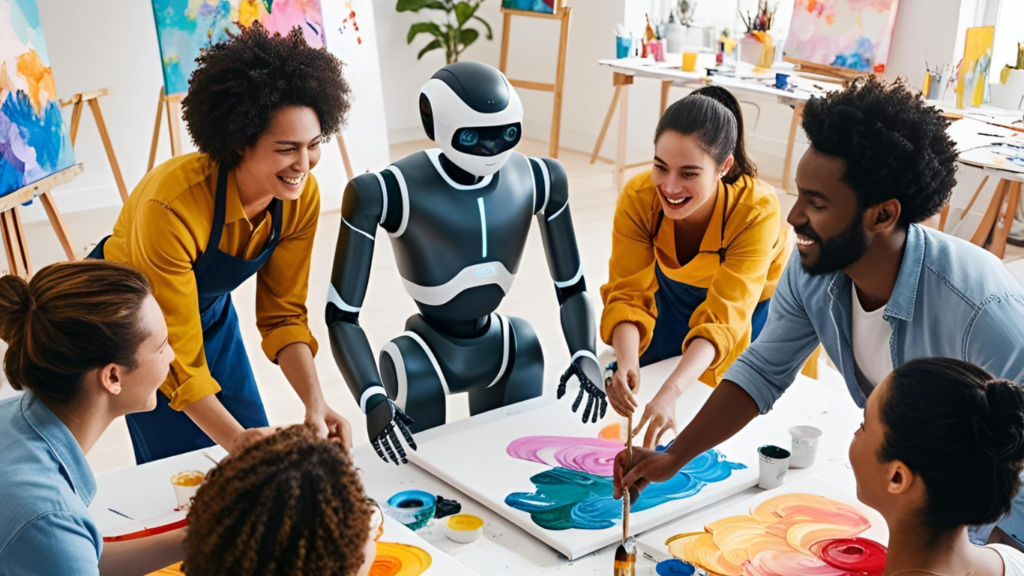The integration of Artificial Intelligence (AI) into the design industry is no longer a distant possibility—it is happening now, and its impact is profound. As AI technologies continue to evolve, they are reshaping the way designers work, pushing the boundaries of creativity, and redefining the relationship between humans and machines. The future of design with AI promises a world where innovation is accelerated, collaboration is enhanced, and personalized experiences are the norm.
AI as a Creative Partner
One of the most exciting aspects of AI in design is its potential to act as a creative partner. AI-powered tools like Adobe Firefly, Canva’s Magic Design, and DALL·E are already enabling designers to generate ideas, create visuals, and iterate on concepts at unprecedented speeds. These tools leverage machine learning algorithms to analyze vast datasets of existing designs, identify patterns, and produce outputs that align with user inputs. For example, a designer can input a rough sketch or a text description, and AI can generate multiple polished design options in seconds.
This collaborative dynamic allows designers to focus on higher-level creative decisions while AI handles repetitive or time-consuming tasks. Far from replacing human creativity, AI amplifies it by providing new perspectives and freeing up mental space for innovation. In the future, we can expect AI to become even more intuitive, understanding context, emotions, and cultural nuances to produce designs that resonate deeply with audiences.
Democratizing Design
AI is also democratizing design by making it accessible to non-designers. Tools like Canva and Wix’s ADI (Artificial Design Intelligence) empower individuals and small businesses to create professional-quality designs without needing extensive design expertise. This shift is leveling the playing field, enabling more people to express their ideas visually and compete in a visually driven marketplace.
As AI becomes more sophisticated, it will further simplify the design process, offering real-time suggestions, automating layout adjustments, and even predicting user preferences. This democratization will not only expand the pool of creators but also foster a more diverse and inclusive design landscape.
Personalization at Scale
In the future, AI will play a pivotal role in delivering hyper-personalized design experiences. By analyzing user data, AI can tailor designs to individual preferences, behaviors, and contexts. For instance, e-commerce platforms can use AI to dynamically generate product recommendations with customized visuals, while marketing teams can create personalized ad campaigns that resonate with specific audience segments.
This level of personalization extends beyond digital design. In architecture and interior design, AI can create spaces that adapt to the needs and preferences of their occupants, optimizing layouts, lighting, and materials for comfort and functionality. The result is a more human-centered approach to design, where every detail is crafted to enhance the user experience.
Ethical Considerations and Challenges
While the future of design with AI is promising, it also raises important ethical questions. Issues such as data privacy, algorithmic bias, and the potential for job displacement must be addressed to ensure that AI is used responsibly. Designers and technologists will need to work together to establish guidelines and frameworks that prioritize transparency, fairness, and inclusivity.
Moreover, as AI becomes more integrated into the design process, there is a risk of over-reliance on technology. Designers must strike a balance between leveraging AI’s capabilities and preserving the human touch that makes design meaningful and authentic.
Conclusion
The future of design with AI is a fusion of human creativity and machine intelligence, where innovation is limitless, and design is more accessible and personalized than ever before. By embracing AI as a tool for collaboration and exploration, designers can unlock new possibilities and create solutions that address the complex challenges of our time. As we navigate this transformative era, the key will be to harness the power of AI responsibly, ensuring that it serves as a force for good in the design world and beyond.











